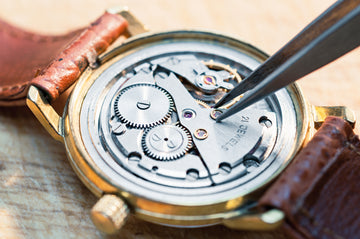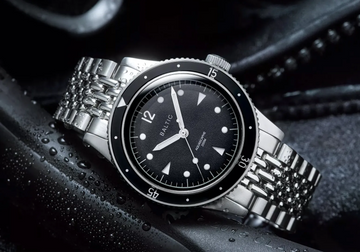In the world of horology, a watch is not just a timekeeping device; it's a masterpiece of craftsmanship, precision, and engineering. Each timepiece is a testament to human ingenuity and dedication, deserving of meticulous care and attention to ensure its longevity and performance. While the idea of DIY watch maintenance may seem appealing, it's essential to approach it with caution and consideration. In this guide, we delve into the art of watch maintenance, outlining key considerations and best practices to help you navigate this intricate process with confidence and care.
Understanding the Complexity of Watches
At their core, watches are intricate machines comprised of countless moving parts working in harmony to measure time with precision. From the oscillations of the balance wheel to the intricate gears of the escapement, each component plays a vital role in the watch's functionality. Before embarking on any DIY maintenance endeavors, it's crucial to appreciate the complexity of watches and the specialized skills and knowledge required to properly care for them.

Proceeding with Caution: Risks of DIY Maintenance
While the allure of DIY watch maintenance is undeniable, it's essential to recognize the inherent risks involved. Mishandling delicate components or using improper tools can result in irreparable damage to your timepiece, compromising its performance and value. Additionally, attempting repairs without proper training or expertise may void any existing warranties or guarantees, leaving you liable for any unforeseen consequences. Before diving into DIY maintenance, carefully weigh the risks and consider consulting a professional watchmaker for complex repairs or servicing.
Routine Care and Maintenance: Best Practices
While certain aspects of watch maintenance are best left to trained professionals, there are several routine care tasks that enthusiasts can safely perform at home. These include regular cleaning to remove dirt, dust, and debris, as well as gentle polishing to restore the watch's luster. Additionally, keeping the watch properly wound and ensuring accurate timekeeping are essential aspects of maintenance that can be managed by the wearer. By adhering to a regimen of routine care and maintenance, you can prolong the life of your timepiece and ensure its continued reliability and performance.
Investing in Proper Storage: Protecting Your Investment
Proper storage is an often-overlooked aspect of watch maintenance, yet it plays a crucial role in preserving the integrity and longevity of your timepiece. Investing in a quality watch storage case, such as the ENSIGN 5 Watch Case or the ODYSSEY 10 Watch Case, provides essential protection against environmental hazards such as moisture, dust, and physical impact. These cases offer features such as waterproof seals, dustproof construction, and cushioned interiors to safeguard your watches when they're not being worn. By storing your watches properly when they're not in use, you can minimize the risk of damage and ensure they remain in pristine condition for years to come.
Knowing When to Seek Professional Help
While DIY maintenance can be rewarding, there are times when it's best to leave the job to the experts. Complex repairs, adjustments, or servicing tasks should always be entrusted to qualified watchmakers with the skills, experience, and tools necessary to perform the work safely and effectively. Whether it's replacing a worn-out movement or addressing issues with accuracy or complications, professional watchmakers have the expertise to diagnose and resolve any issues with precision and care.
---
Watch maintenance is both an art and a science, requiring a delicate balance of knowledge, skill, and caution. While DIY enthusiasts can perform certain routine care tasks at home, it's essential to approach maintenance with respect for the complexity of watches and an awareness of the potential risks involved. By investing in proper storage, adhering to best practices, and knowing when to seek professional help, you can ensure that your cherished timepieces remain in optimal condition for generations to come.





